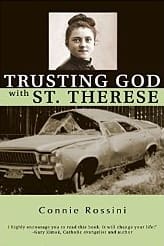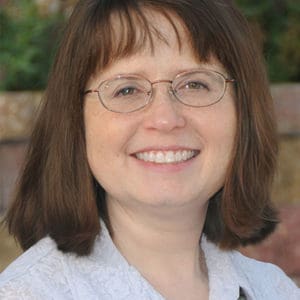Are there Two Paths to Holiness?
 The other day while doing research for a blog post, I came across a discussion about Teresa of Avila’s Interior Castle in a Catholic forum. One poster wrote that a holy priest told her that Teresa of Avila’s teaching was not meant for most lay people. This is the sort of comment that perturbs me. If the conversation hadn’t been a few years old, I would have chimed in. Instead, I decided to write about the subject here.
The other day while doing research for a blog post, I came across a discussion about Teresa of Avila’s Interior Castle in a Catholic forum. One poster wrote that a holy priest told her that Teresa of Avila’s teaching was not meant for most lay people. This is the sort of comment that perturbs me. If the conversation hadn’t been a few years old, I would have chimed in. Instead, I decided to write about the subject here.
Are there two paths to holiness–one for religious and another for lay people? Perhaps this discussion is just a twist on the age-old argument about the contemplative versus the active life. Perhaps the priest had told this woman that most lay people are not called to the contemplative (rather than the active) life, and she thought he meant they are not called to contemplative prayer.
A reader asked me a similar question recently. Confused about the right balance between family duties and the spiritual life, she asked if some people were called to more prayer than others. I answered that some people are called to MORE prayer, but everyone is called to prayer. I could have also said that everyone is called to contemplation.
Before we go any further, I want to clarify that we need to leave room for the Holy Spirit to work as He wills. God can take a total beginner in the spiritual life and raise him to the heights of holiness, if He so desires. We can’t put God and His ways in a box. At the same time, there is a normal pattern of spiritual growth that people follow. Just as humans progress from children to adolescents to adults, so in the spiritual life we pass through the purgative, the illuminative, and the unitive ways.
Contemplation is not like locutions or visions or miraculous powers. Fr. Thomas Dubay writes,
“Scripture knows nothing of two ways to God and two differing prayer paths, one for the many, the other for the few. Nor have I found in patristic or medieval literature anything suggesting the two-way theory of recent centuries… I may say, however, that this recent view is not only incompatible with clear texts in Vatican II, texts dealing with mystical contemplation, but it is also clearly excluded in many texts by both Carmelites [Teresa of Avila and John of the Cross]…” (Fire Within, Chapter 11, pp. 199-200.)
Now, of course, contemplation is a gift from God. He can give it or withhold it as He chooses. But that is true of all His gifts. It doesn’t follow that He only gives it to a few, or that He only desires for a few to have it. The problem is not God’s lack of generosity, but ours. Few people give their all to God. Those who do find that He also gives His all to them. In other words, they become contemplatives.
There are other reasons why so few people reach the deepest union with God. One is ignorance. And that ignorance is only promoted when people tell others that there are two ways to holiness. God calls us all to deepest union with Him. This is the message we should be spreading.
 Note from Dan: Connie Rossini has recently published Trusting God with St. Therese. If you like Connie’s posts, you will love her book.
Note from Dan: Connie Rossini has recently published Trusting God with St. Therese. If you like Connie’s posts, you will love her book.
+
Art for this post asking if there are two paths to holiness: Teresa of Avila, Peter Paul Rubens, 1614, CC by SA, painting out of copyright, Wikimedia Commons. Cover of “Trusting God with St. Therese” used with permission.





